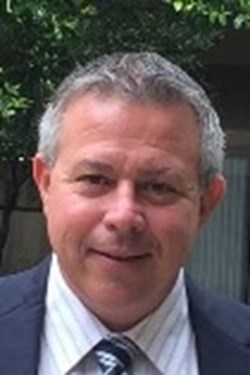
Experimental chemical physics in the field of reaction dynamics seeks to observe and understand the outcome of molecular collisions and dissociation processes, in the gas phase ranging from atomic and diatomic systems all the way to studies of aerosols and other nanoparticles. Two extreme examples of experimental studies of reaction dynamics will be presented, making use of similar ion beam techniques including electrostatic ion beam traps and time- and position-sensitive detectors.
In the first instance, a benchmark measurement of the dynamics of an elementary chemical reaction will be reviewed, wherein the negatively charge F¯(H2O) complex is used to promote and study the F + H2O → OH + HF neutral reaction following photodetachment. This type of experiment can be carried out by the technique of photoelectron-photofragment coincidence spectroscopy. This four-atom system has six internal degrees of freedom and represents a grand-challenge for accurate calculations of the Born-Oppenheimer potential energy surfaces and quantum dynamics of the system. Comparison of experiment with theoretical predictions shows that this system can be treated with near chemical accuracy, but there are still challenges in accounting for excited states and long-lived complexes.1
In the second instance, a new single-particle dust accelerator/decelerator will be discussed.2 This apparatus makes use of similar experimental techniques, but is applied to much more complex systems: micron and sub-micron-sized nanoparticles. The mass and charge of single nanoparticles can be measured using charge detection mass spectrometry and the particle then accelerated or decelerated to the desired final velocity for studies of particle impact with surfaces. Applications to measurements of the coefficient of restitution for polystyrene latex spheres and tin nanoparticles and the durability of free-standing nanostructures with respect to particle impact will be presented.
References
[1] R. Otto, J. Ma, A.W. Ray, J.S. Daluz, J. Li, H. Guo and R.E. Continetti, Science343, 396 (2014)
[2] B.D. Adamson, M.E.C. Miller and R.E. Continetti, EPJ Tech. and Instrum.4:2 (2017)
Bio
Robert E. Continetti is a Distinguished Professor of Chemistry in the Department of Chemistry and Biochemistry at the University of California, San Diego. He has been at UCSD since 1992, is a Fellow of the American Physical Society and was named the Kurt Shuler Scholar in Physical Chemistry from 2006-2011. He served as Chair of the Department of Chemistry from 2006-2012, and as the elected Chair of the Academic Senate of the San Diego Division of the University of California in 2015-2016. He received his B.A. in Chemistry from the Johns Hopkins University in 1983 and the Ph.D. in Chemistry from the University of California, Berkeley, in 1989 working under the direction of Nobel laureate Yuan T. Lee on experimental studies of molecular reaction dynamics. His research focuses on the energetics and dissociation dynamics of transient molecules important in combustion, atmospheric, plasma and interstellar environments using lasers and ion beam techniques as well as the development and application of novel instrumentation for mass spectrometry and studying the chemistry and collision dynamics of aerosols and nanoparticles. His research and teaching efforts have been recognized by a number of awards, including a Packard Fellowship in Science and Engineering, a Camille Dreyfus Teacher-Scholar Award, an Alfred P. Sloan Research Fellowship, and a Warren College Teaching Award. In 2012 he received the ACS Physical Chemistry Division Award in Experimental Chemistry as well as a UCSD Diversity Champion Award.